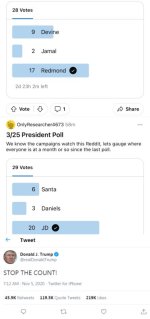I'm not trying to call you out or go aggro on you,
blarg , I'm just using your comment to say it loudly and clearly enough for everyone to understand:
The June length of service raise is inadequate even when evaluated solely as a length of service raise.
The 1.6% length of service raise in June was meant to solve BUEs never needing to deal with the performance reviews and “Within Grade Increases" (WGIs) like the rest of the federal workforce, but the length of service raises have
never been close to comparable to that system. It takes a
“standard” federal employee approximately 17 years to start at Step 1 of their pay band and progress to the top at Step 10 (IIRC it's 1 step per year for steps 2-4, then 2 years per step for 5-7, then 3 years for 8-10). This 17 year timeline
does not include “Quality Step Increases" (QSIs) which are awarded frequently and shortens that 17 year timeline
substantially for a federal employee: a single QSI can shorten their timeline by
3 years, multiple QSIs for an employee are
not uncommon, and QSIs do not negate/reset the normal progression timer of WGIs. It is
not uncommon for a federal employee to be at the top of their pay band in less than 10 years due to QSIs stacking on top of WGIs. You can search federal employee reddit threads and see for yourself the amount of people that get blessed with their 2nd/3rd/4th QSI in conjunction with their normal WGI; if they get a WGI to step 9 along with a QSI to step 10, that's roughly 7 of our June raises
in one go.
Our annual 1.6% “length of service” raise means that it takes us almost
19 years only when in the same pay band. Unless you are able to luck into the enroute “golden ticket” at the beginning of your career, you are doomed to spend -
at minimum - several years climbing facility levels until you get to your final facility. And it isn’t until you are at your final facility when that 19 year timer
starts; that effectively guarantees you will
never see the top of your pay band in your career. NATCA needs to be negotiating for those that don’t win the facility level lottery in year one.
The June raise needs to be 2.5%
at minimum, but optimally it should be higher (closer to ~3.2% in my opinion). At 2.5% it would still take approximately 13 years in the same pay band to reach the top; that barely beats a “standard” federal employee who
never sees a QSI in their career (which is uncommon). My personal preference at 3.2% puts that timeline closer to 10 years. Most BUEs in the terminal track are defined by when they can transfer from their first facility, and usually there is at least one middle facility before they reach their “dream facility.” A 10 year progression timeline helps to account for those where transfers may disrupt the first half of someone’s career progression.
Another possible solution could be to track the length of service raises on the SF50 somehow and make them raises that don't reset upon facility transfer; it becomes a length of service raise with the
agency and not the
facility. With that kind of a mechanism, a 2.5% raise would seem more reasonable/acceptable at the negotiating table; a faster than average progression should still be fought for by NATCA since controllers face the earlier retirement age.
